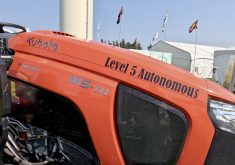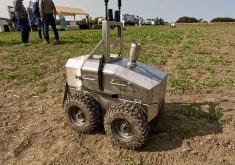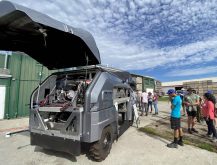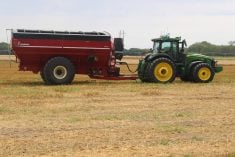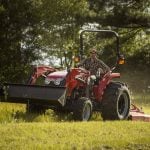Glacier FarmMedia – Collecting bales that are spread out across large fields is an onerous job. That’s why Vermeer has developed an autonomous bale mover.
“We saw a need out there starting with biomass, where we needed to pick up a bunch of corn stalk bales and put them to the edge of the field,” said Kent Thompson, forage innovations engineering manager at Vermeer.
“We thought that’s a job where it’s hard to find labour to do that because it’s kind of a seasonal thing, and so this machine seems like a potentially viable solution for that.”
Read Also
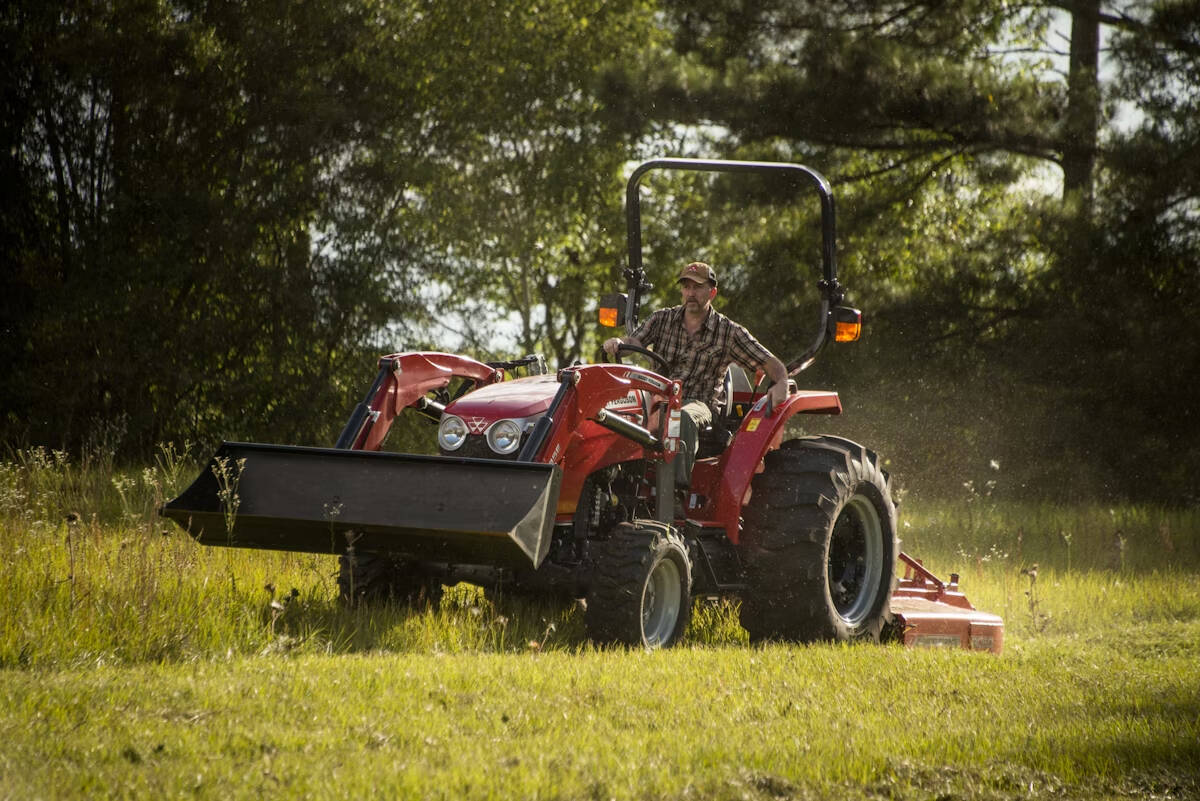
Agco settles legal dispute with TAFE
Agco and Tractors and Farm Equipment (TAFE) from India announced July 1 that they had settled their legal dispute, which began in 2024 over local ownership of the Massey Ferguson brand name and other concerns.
The bale mover can pick up to three bales, one at a time, unless the bales are in a row. Then it can load all three at the same time.
The robot uses a track system to pull bales onto its rack, which is built with a slight angle.
“The machine knows exactly where the bale is, so it knows when to turn those tracks on. It’ll drive up to the bale and it won’t turn the track on until it’s right where it needs to be, and when the ground drive is helping move the bale up,” Thompson said.
“You’ll notice that there’s very little damage on the bales and the net wrap.”
He said designing the machine so it causes little damage to the bales or wrap was one of the most difficult challenges engineers had to deal with.
A user interface is employed to create field boundaries on Google Maps, or a similar app, and operators also indicate where to create the bale stacks.
“It will automatically calculate what we call a scour pattern, a kind of a back-and-forth pattern to make sure we see the entire field or cover the entire field. It’s based on the field of view of the sensors,” Thompson said.
The robot will begin by moving the bales closest to where the stack is to be made, to get the bales out of the way.
Once it has a full rack of three bales, it moves where it was told to make a stack, usually on the edge of the field. The robot autonomously unloads the bales and goes back into the same scour pattern.
Operators set how many bales they want in each row, and how close multiple rows will be to each other if multiple rows are made.
GPS is used on the machine to make sure it doesn’t stray outside field boundaries, but the GPS location of the bales is not needed.
“What’s kind of nice about not having to know the prior pass data, is you can go into any field without getting prior information from the baler or whatever the case may be,” Thompson said.
“Bales don’t always drop in the exact spot, so this way we just go in there and find them no matter where they’re at.”
He said the robot is a prototype and the company is considering the best sensor configuration to use. So far, it uses a rotating multi-scan lidar, which enables the robot to identify the orientation of the bales.
There are also lidar sensors on the side of the machine to increase its safety.
“Basically, if you break that (laser) field, it tries to drive away from you a little bit and or it slows down and stops,” Thompson said.
The robot can be controlled with a remote for loading and unloading, or for moving around the yard and shop. It is designed to run at about five mph.
“The intent is to continually pick up throughout the day and night. The productivity we get is based on longer time duration, because we don’t need a person out there running it,” Thompson said.
The Vermeer design team is working on a system that will enable the robot to send alerts if it gets into trouble and allow operators to check its status.
The prototype has a hydrostatic drive train powered by a 74-horsepower engine. Future versions will likely have a smaller engine.
Like custom baling operations, there may be an opportunity for business to use the robotic bale mover in a custom business, said Thompson.
Vermeer does not have a timeline for when the robot will be on the market.
This article was originally published at The Western Producer.




